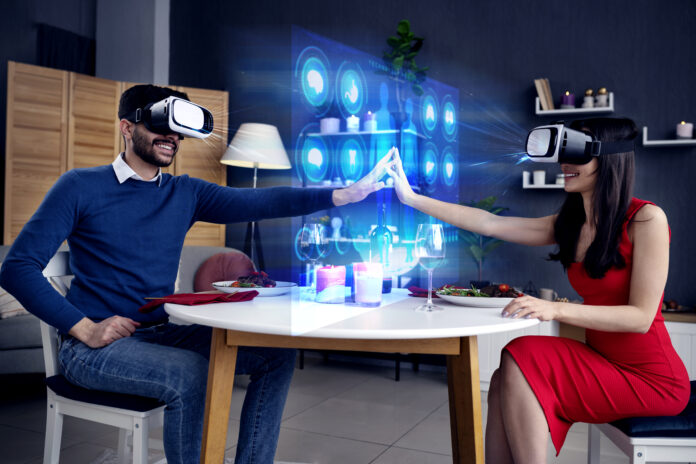Virtual Reality (VR) and Augmented Reality (AR) have steadily evolved, captivating imaginations and transforming the way we interact with the digital world. As these technologies mature, the integration of AI is poised to propel VR and AR into new realms of possibility, offering a seamless and intelligent user experience.
Enhanced Immersion with AI-powered VR:
VR is associated with immersive experiences, transporting users to entirely new worlds. With the infusion of AI, this immersion is ready to reach unprecedented levels. AI algorithms can analyze user behavior, adapting the virtual environment in real-time to suit individual preferences. For instance, AI can adjust lighting, sound, and even storyline elements based on user reactions, ensuring a personalized and captivating experience.
Intelligent Interaction in AR:
AR overlays digital content onto the real world, enriching our perception of the environment. AI enhances this interaction by providing intelligent context-awareness. Imagine wearing AR glasses that recognize objects and people, offering relevant information in real-time. AI algorithms can understand the user’s surroundings by providing helpful insights and directions or translating foreign languages quickly.
Adaptive Learning Environments:
AI’s machine learning capabilities can revolutionize educational VR experiences. AI algorithms can dynamically customize educational content by examining a user’s progress, preferences, and learning style. This adaptive learning approach ensures that each user receives a customized and productive learning experience, accelerating the pace of understanding and retention.
Natural Language Processing for Seamless Communication:
Natural Language Processing (NLP) in AR and VR is a game-changer. AI-driven NLP enables more natural and intuitive communication within virtual and augmented spaces. Users can interact with digital elements using voice commands, making the experience more immersive and user-friendly. It is particularly crucial for AR applications, where hands-free interaction is often preferred.
Realistic Avatars and Emotion Recognition:
AI can enhance the social aspects of VR by creating realistic avatars that mimic users’ expressions and emotions. Emotion recognition algorithms can analyze facial expressions and body language, translating them into the virtual realm. It fosters a more lifelike social experience and has applications in therapy, gaming, and virtual meetings, where understanding emotional cues is essential.
AI-driven Content Creation:
The creation of virtual content can be a time-consuming process. AI algorithms, however, can streamline and expedite this by automating aspects of content generation. From designing virtual landscapes to populating them with interactive elements, AI can significantly reduce the production time for VR and AR experiences, making them more accessible to a broader audience.
Data-driven Personalization:
AI excels at analyzing vast amounts of data, and it is leveraged in VR and AR to deliver highly personalized experiences. AI can anticipate and provide material that aligns with personal preferences by examining user behavior, preferences, and previous interactions. This level of personalization enhances user satisfaction and opens up new avenues for targeted advertising within virtual and augmented spaces.
The fusion of VR, AR, and AI heralds a transformative era where digital experiences become immersive, intelligent, and adaptive. The synergy of these technologies holds the potential to redefine industries ranging from entertainment and education to healthcare and business. As AI advances, the boundaries of what is possible in the virtual and augmented realms will continue to expand, promising a future where our digital interactions are lifelike, personalized, and responsive.





